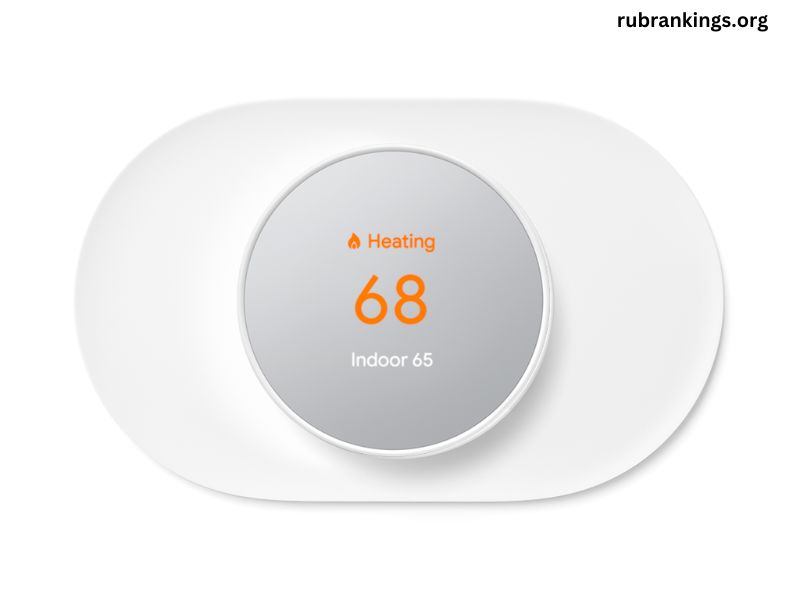In today’s world of home automation and HVAC (heating, ventilation, and air conditioning) systems, thermostats have become central to maintaining comfort and energy efficiency within our homes. Whether it’s controlling the temperature or setting a schedule for the HVAC system to follow, thermostats have evolved significantly in terms of both technology and design. One feature that often goes unnoticed in the installation and functionality of modern thermostats is the “trim kit.” But what exactly is a trim kit on a thermostat, and why is it important? In this article, we will explore the purpose of a trim kit, when it is used, and how it can improve the overall aesthetic and functionality of a thermostat.
Understanding a Thermostat Trim Kit
A trim kit is essentially a set of components designed to finish or “trim” the installation of a thermostat to ensure it fits properly within a wall and provides a clean, professional look. The trim kit typically consists of a decorative or functional cover that hides any imperfections left behind after installing the thermostat base, such as gaps, holes, or uneven edges around the thermostat. This component is primarily used for aesthetic purposes but can also provide some functional benefits.
It is important to note that the trim kit is not essential to the operation of the thermostat itself. The thermostat will work perfectly fine without one, but the trim kit can be a valuable addition when it comes to the final presentation and functionality of the installation.
Why Is a Trim Kit Needed?
When installing a thermostat, there is often a need for some form of finishing around the device. Depending on how the thermostat is mounted, there may be:
- Visible gaps: When a thermostat is installed to replace an old unit or when there’s a mismatch between the wall cut-out and the thermostat’s base, the area around the thermostat may be uneven or have visible gaps.
- Damage to the wall: Removing an old thermostat or mounting a new one can cause slight damage or discoloration to the surrounding wall area, leaving a less-than-ideal finish.
- Aesthetic appeal: A trim kit can make a thermostat installation look polished and tidy, matching the room’s design and enhancing the overall interior appearance.
A trim kit is designed to address these issues, creating a seamless appearance where the thermostat meets the wall. It can also help prevent dust, dirt, or insects from entering the back of the thermostat and interfering with its operation.
Components of a Thermostat Trim Kit
The exact contents of a trim kit can vary depending on the thermostat brand and model. However, most trim kits will contain the following components:
- Trim plate or decorative cover: This is the primary component of the trim kit. It is a flat piece of material, typically plastic or metal, that fits around the edges of the thermostat base to cover up any imperfections in the installation. It is available in various shapes and sizes, often corresponding to the specific model of the thermostat it is designed for.
- Screws or mounting hardware: The trim kit will generally come with the necessary screws or other hardware needed to secure the trim plate to the thermostat’s backplate or the wall. Some kits might use adhesive strips for easy installation, especially for less intrusive or smaller trim pieces.
- Gaskets or seals: Some high-end trim kits also include additional seals or gaskets to ensure a more snug and secure fit around the edges of the thermostat, preventing any drafts or heat loss from the wall.
- Instructions: While many trim kits are fairly intuitive to install, most manufacturers include a set of instructions to guide you through the installation process, especially if the trim kit is more complex or if additional components are involved.
Types of Trim Kits
Not all trim kits are the same, and their appearance can vary depending on the type of thermostat you have. Below are some common types of trim kits that you might encounter.
- Standard Trim Kits: These are the most common type of trim kits and are usually made of simple plastic or metal. They are designed to fit around a thermostat’s base and cover up small gaps or uneven edges. Most standard trim kits are neutral in color, such as white or gray, to match the thermostat’s base.
- Designer or Decorative Trim Kits: For homeowners who are looking to match the thermostat to a specific style of decor or interior design, decorative trim kits offer a more customized option. These trim kits come in a range of colors, materials (such as brushed nickel, matte black, or bronze), and finishes to match modern or traditional home aesthetics. Some may also include embossed or textured patterns for a more artistic touch.
- Universal Trim Kits: Some manufacturers offer universal trim kits that are designed to fit multiple models of thermostats. These kits usually include adjustable components or multiple sizes of trim plates to accommodate different installation requirements. While universal kits are versatile, they may not always offer the perfect fit for every thermostat model, so it’s important to double-check measurements before installation.
- Low-Profile Trim Kits: For a more minimalist appearance, low-profile trim kits are designed to be subtle and unobtrusive. These trim kits are often used for digital or smart thermostats that are designed to sit flat against the wall with minimal protrusion. These kits may have a sleek, simple design without any visible fasteners or complex shapes.
Benefits of Using a Trim Kit
Using a trim kit when installing a thermostat can provide several key benefits that make it a worthwhile consideration during installation.
- Improved Aesthetics: The most significant benefit of a trim kit is the way it improves the look of the thermostat installation. It hides any visible holes, gaps, or imperfections around the thermostat base, making the overall installation look professional and polished. A trim kit can create a sleek, seamless appearance that integrates the thermostat into the wall, making it look as though it belongs there.
- Enhanced Durability: A trim kit helps protect the thermostat by covering the edges of the device, which could be vulnerable to scratches, dust, and damage. Additionally, the trim can help seal the thermostat more effectively, protecting the internal components from debris, dirt, or moisture.
- Concealing Wall Imperfections: If the wall around the thermostat installation is damaged or has holes from an old thermostat, the trim kit will conceal these imperfections. Whether the wall has been chipped, scratched, or has uneven paint or wallpaper, the trim kit can provide an easy solution to cover up these cosmetic issues.
- Easy Installation and Maintenance: Many trim kits are designed for easy installation. They are often user-friendly, with some kits not requiring additional tools or a professional to fit them. Additionally, trim kits can be easily removed for cleaning or maintenance, making it simple to access the thermostat for troubleshooting or replacement.
- Increased Home Value: Although it may seem like a small detail, having a clean, professional thermostat installation can contribute to the overall value of your home. Buyers or renters may notice the neatness of the installation, which could influence their perception of your home’s maintenance and quality.
When Do You Need a Trim Kit?
There are specific situations where a trim kit becomes more than just an aesthetic upgrade. Here are a few cases when a trim kit may be particularly useful:
- Replacing an Old Thermostat: If you are replacing an old thermostat, especially if the old unit was much larger or smaller than the new one, you may find gaps or damage around the mounting area. A trim kit can cover up the imperfections and make the new thermostat installation look more professional.
- Wall Damage: If your walls are damaged, stained, or otherwise unsightly where the thermostat is installed, a trim kit can easily cover these areas to improve the overall look.
- Custom Thermostat Installations: For custom installations or where a thermostat has been mounted in a non-standard location, a trim kit can be the perfect solution to finish the job neatly and securely.
- Smart Thermostats: With the rise of smart thermostats, which often come with sleek and modern designs, many users want to ensure that the device fits seamlessly into their home’s decor. Trim kits designed for smart thermostats can help integrate these devices into a home’s style.
Conclusion
A thermostat trim kit may seem like a small, secondary component of thermostat installation, but it plays a crucial role in ensuring a clean, secure, and professional look. Whether it’s for concealing gaps, hiding wall imperfections, or improving the overall appearance of the thermostat, a trim kit adds both functional and aesthetic value. Whether you’re installing a traditional thermostat or a high-tech smart model, considering a trim kit can help complete the installation and elevate the overall design of your home.
So, if you’re installing a new thermostat or replacing an old one, don’t overlook the importance of the trim kit—it might be the finishing touch that makes your thermostat blend in beautifully with your home’s interior design.



